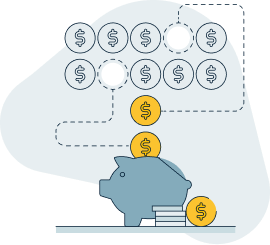You can open a First Home Savings Account (FHSA) and make tax-deductible
contributions of up
to $8,000 annually, to a lifetime maximum of $40,000. If you don’t
contribute the full
$8,000 in a single year, the balance can be carried forward and added to
next year’s
contribution amount. This means that if you contribute less than $8,000
within the year, you
can contribute the unused amount in the subsequent year in addition to
the $8,000 annual
contribution limit and contribute a maximum of $16,000 in a given year.
Your funds and any investment earnings can stay in the FHSA and grow
tax-free with every
contribution you make until you’re ready to buy your first home. As long
as you use the
funds for your qualifying first home, you won’t have to pay any taxes on
your FHSA
withdrawal(s).
The funds in your FHSA have to be used by December 31 of the 15th year
after opening the
account, or by December 31 of the year you turn 71, whichever comes
earlier. If you have not
used the funds in your FHSA by that time, you can transfer the funds
from your FHSA on a
tax-free basis to your Registered Retirement Savings Plan (RRSP) without
impacting your RRSP
contribution room, or to your Registered Retirement Income Fund (RRIF).
Otherwise, you can
withdraw funds from your FHSA, but your withdrawal will be taxed.


